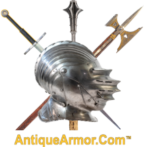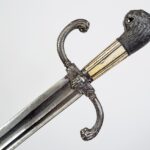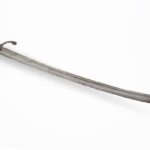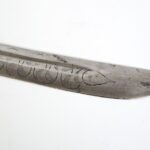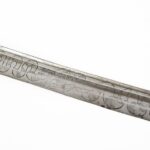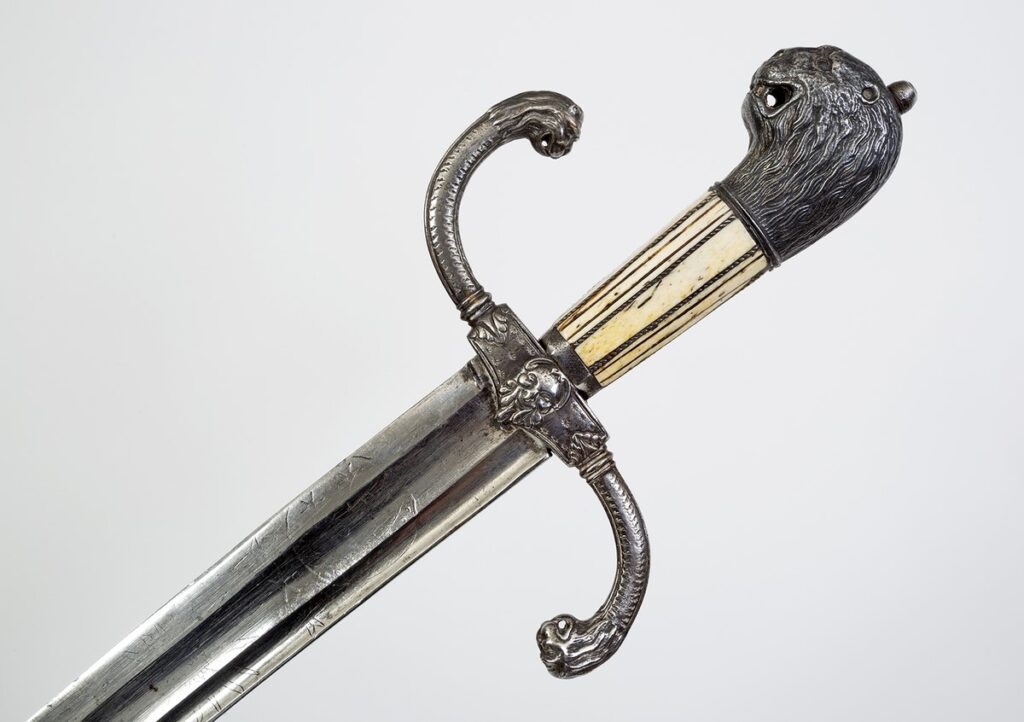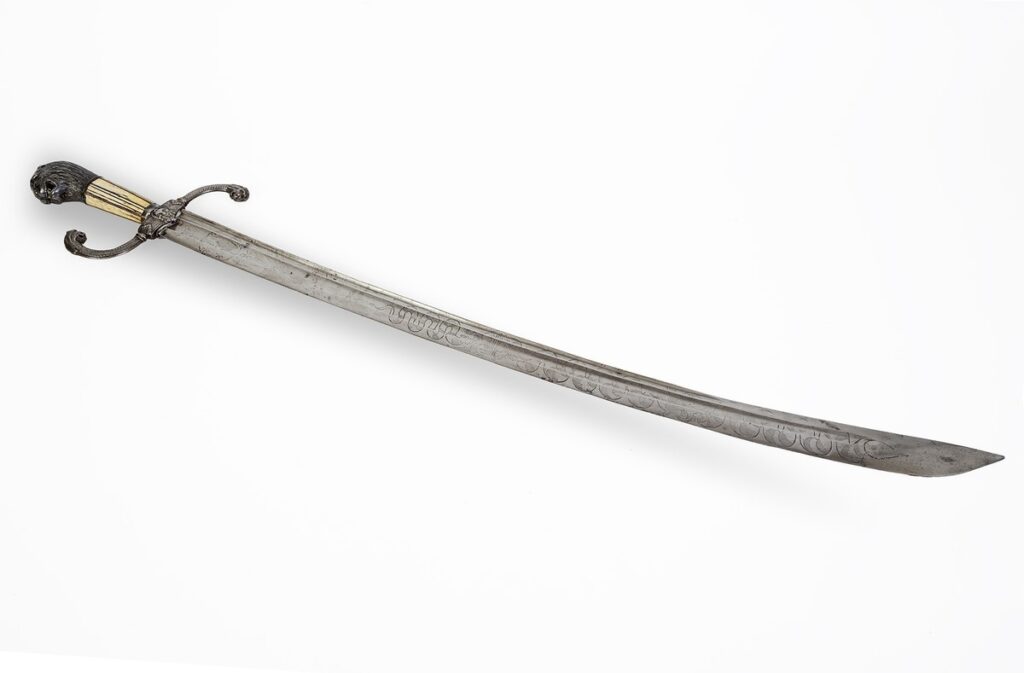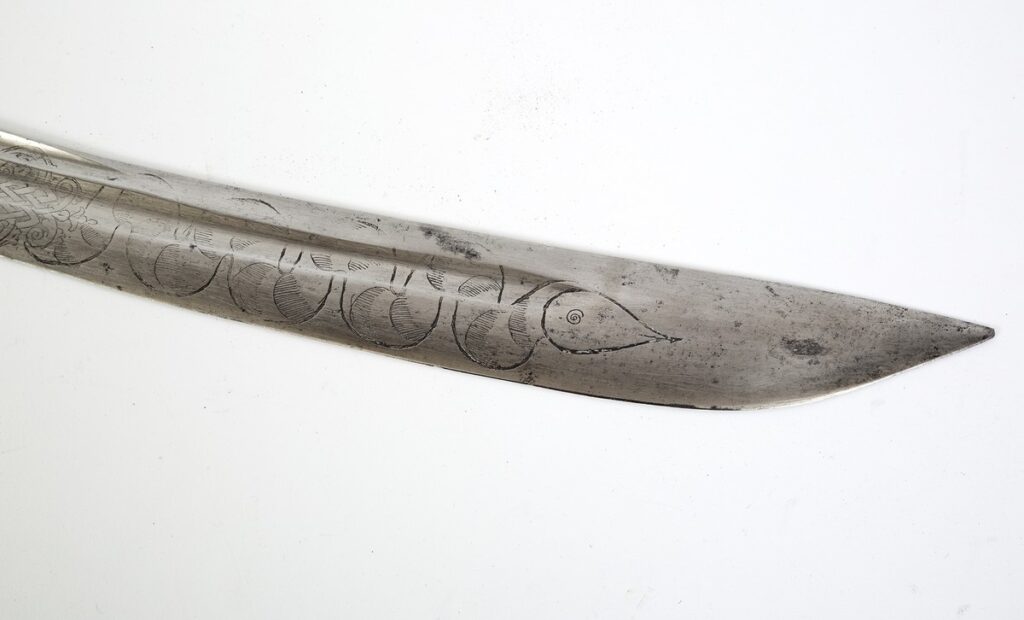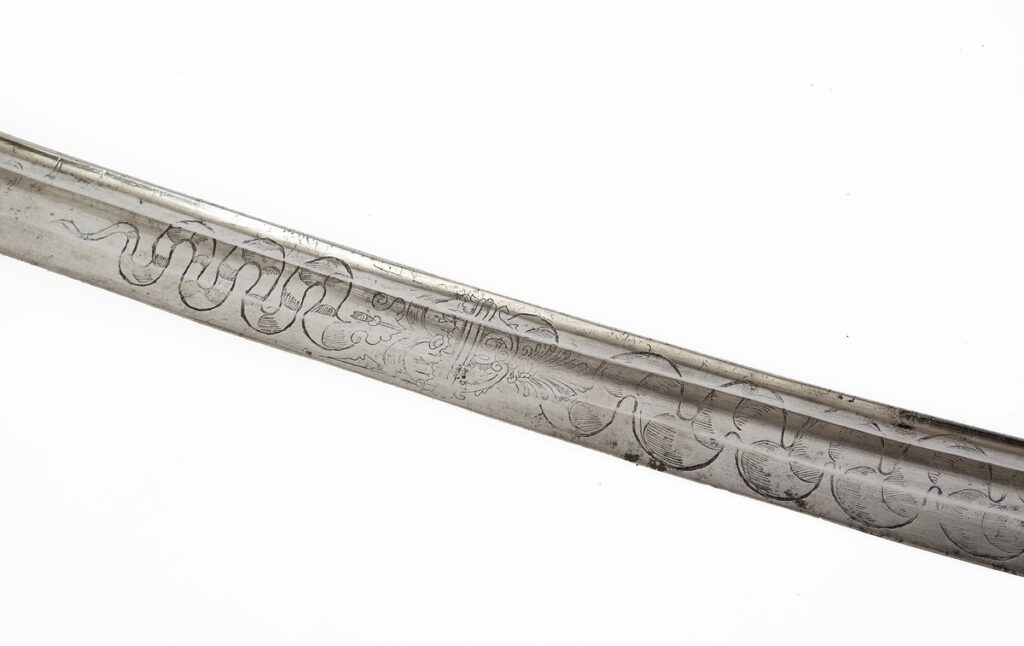1749) AN IMPORTANT MUSEUM-QUALITY CHISELED AND ETCHED SABER CIRCA 1600:
Introduction: Exceptional construction, almost certainly Italian or French. It could date to either late 16th century or early 17th century. The etching of the blade is hinting towards about 1600-20.
Discussion: The saber is historically associated with 17th—to 20th-century cavalry use; however, its origins are much earlier. The curved-blade sword (saber) is believed to have been introduced to Eastern and Central Europe by Central Asian nomadic invaders called “szablya” as early as the 9th century. Even though the shape of this saber may be Turkish, its decoration makes it crystal clear that it is Italian, or possibly French. This very elegant example undoubtedly was commissioned by a person of wealth and stature
The word saber (American) or saber (English) is believed to have evolved in Western Europe from what is current-day Hungary. This uniquely distinguishable sword was popular in Hungary and had a strong following in Germany, where it was adopted for warfare.
In a perfect world, a saber (English spelling) or saber (American spelling) is a sword sharpened on only one side, with a curvature on the blade and a basket or cage to protect the hand. In the real world, there is a bit of confusion. Some sabers do not have a curvature on the blade or protection for the hand. Some sabers have specific names by country of origin or style. For example, the tessak is a North German or Scandinavian sword, the Schiavona’s Venetian, etc.
The first documented saber-form sword in Western Europe is found in a painting by the Swiss artist Hans Holbein the Younger for the decoration of a swordsmith’s shop.
Description: Constructed with an iron hilt, carved in the form of a lion head pommel with open jaws, protrudingfinely sculptured teeth, ears, and pelt. The hilt with a flat recurved guard widening toward the finial tip in the form of a lion head en suite with the pommel, the quillon block with a grotesque face, the outer sides of the guards, the connections, and the quillon are decorated with punched decorations. The grip of bovine with delicate silver wire verticle inlay. Single-edged blade with curvature, double-edged tip with deep fuller almost the length of the blade, decorated with a half moon with a face with two stars all within a circle, a bright sun, and a long serpent about 2/3 the length of the blade. The aforementioned blade description is on both sides—approximate length: 99 cm.
Publication: – Collectors Cour
Conclusion: A spectacular and rare item that would look great in any collection or museum. I have had three over the last 35 years, and this is the best, without a doubt. I have owned it for many years and can tell you it’s an attention-getter that will grace the walls of any collection or museum. ACT NOW!!!*
